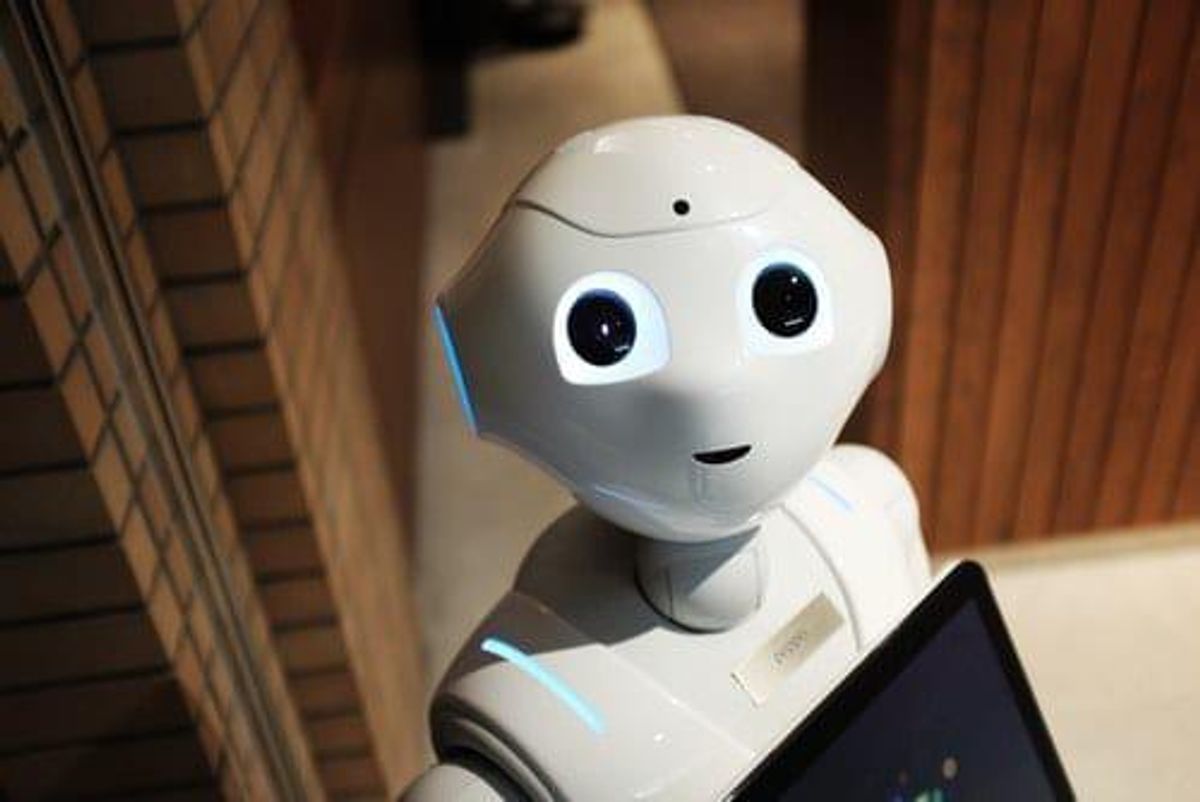
Pepper, a new robot that uses facial recognition technology, can read human emotions, dance and tell jokes.
On Wednesday (August 28), HSBC Bank Canada became the first bank in the country to introduce Pepper the robot into its customer service operations. Pepper greeted, answered questions and posed for selfies with customers at the bank’s 70 York Street location in Toronto.
Pepper is a customer service robot developed by SoftBank’s (OTC Pink:SFTBY,TSE:9984) SoftBank Robotics and will greet, educate and engage with the bank’s clients. It can even tell jokes and dance.
Pepper’s integration into the Toronto branch follows the bank’s rollout of customer service robots in Beverly Hills, Seattle and New York.
“I am very excited about Pepper and I know that it will get others more excited about coming into the bank,” Larry Tomei, executive vice president and head of retail banking and wealth management at HSBC Bank Canada, said in a press release. “When talking with our customers, Pepper will help educate them to get the most out of our products and services and learn about other options.”
One of Pepper’s distinct capabilities is that it can read emotions, says SoftBank. The company harnessed facial recognition technology and linguistic expertise when developing Pepper, and the robot mimics conversational speaking modes and looks straight at the people it is talking with.
Pepper has also been designed to convey particular emotions, such as excitement and enthusiasm, Matt Willis, design and HRI lead at SoftBank Robotics, told the Robotics Business Review.
Interestingly, even with these human attributes, Pepper is intended to resemble a robot. “Pepper is not trying to be human — it’s trying to be social,” explained Willis. It was designed with pointedly non-threatening features.
While the robot was made to entertain, it was also developed to help with things such wait time reductions, employee referrals and product information, including credit cards and special promotions.
Willis pointed out that the robot has countless future possibilities. As Pepper gains greater insight over time, it could have the ability to recognize individual customers, details and recent visit queries. As a customer enters a room, it could greet them by their name and provide them with customized services.
“Robotics can never be a substitute for our amazing employee team,” Tomei said in the release. “The exciting opportunity for Pepper is in enhancing our already strong client and employee experience.”
Pepper is HSBC Bank Canada’s newest technology feature, following in line with a number of investments over the years.
For example, HSBC Bank Canada launched its Global Data and Innovation Lab in Toronto in May. The research lab boasts over 3,000 square feet and 50 new staff principally focused on artificial intelligence (AI) and data analytics. More specifically, the lab will analyze the bank’s 1.6 million corporate and institutional clients’ data.
In addition, HSBC Bank Canada has introduced a number of fully online banking services. ECredit allows small businesses to apply for financing online, and Wealth Compass is a portal for online investing and investment advice. Clients can also apply for chequing accounts and credit cards fully digitally.
In line with this, PwC projects that retail branches will drop 20 percent by 2020 in the US as clients shift more of their banking online. The firm also anticipates this trend to accelerate, as the overhead costs of physical branches remain high and as branches are reducing staff.
As retail branches witness lower visit levels, brick and mortar banks are actively seeking new ways to engage with their clients, the PwC report says. Banks are projected to develop engagement hubs or smart kiosks to adapt to changing consumer behaviors.
It is clear that the banking system is changing. With challenger banks gaining greater market share, retail branch visits decreasing and online banking offering more sophisticated services, AI and robotics seem like an alternative solution.
Looking ahead, according to Research and Markets, the robotic process automation (RPA) market in the financial services industry is expected to grow at a considerable clip. RPA revenue is anticipated to rise at a compound annual growth rate of 24.5 percent between 2018 and 2023 to reach US$955.2 million.
Central to its adoption are services involved in consulting, training, educating and implementing the technology.
Don’t forget to follow us @INN_Technology for real-time news updates!
Securities Disclosure: I, Dorothy Neufeld, hold no direct investment interest in any company mentioned in this article.